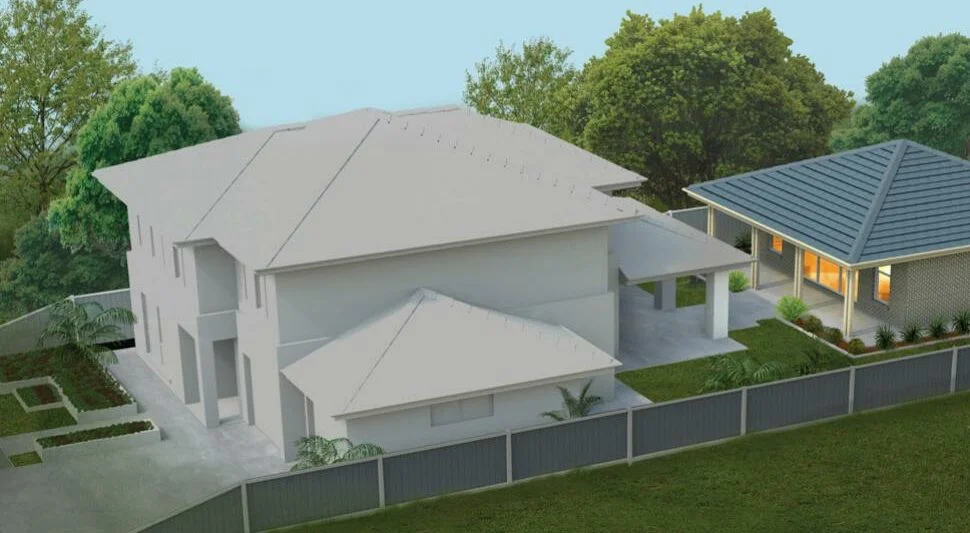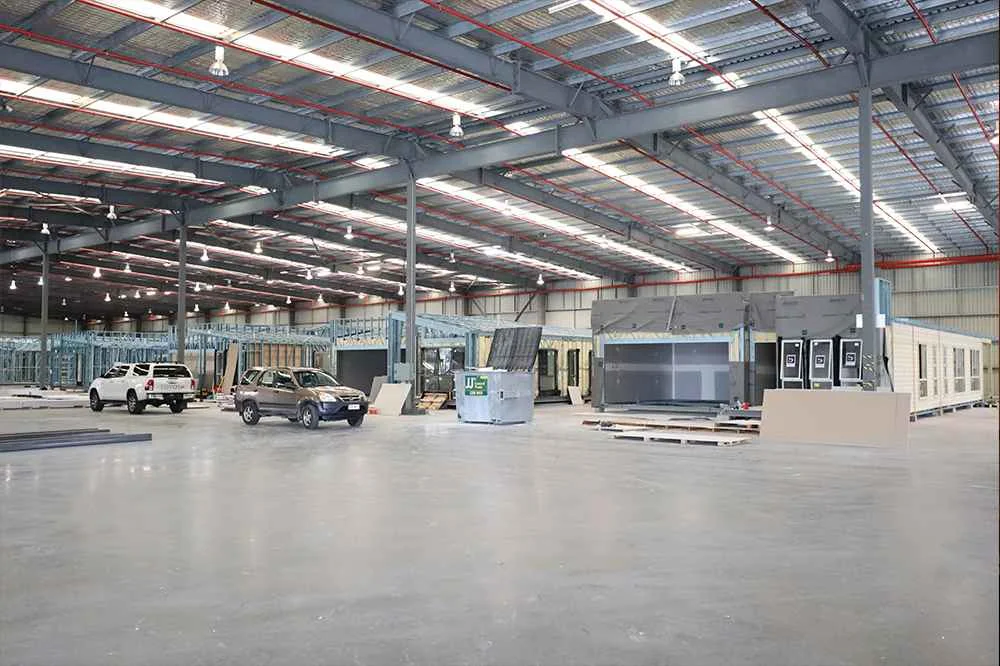Changes to secondary dwellings - VOLO Group

Granny Flats Rules
The Queensland Government have now allowed home owners to rent out their Granny Flats.
To provide people with more access to housing options, restrictions on who can live in secondary dwellings will no longer apply across Queensland and will enable homeowners to rent out secondary dwellings, such as granny flats, to anyone.
Volo Modular are expert Granny Flat builders in Queensland.
To provide people with more access to housing options, restrictions on who can live in secondary dwellings will no longer apply across Queensland and will enable homeowners to rent out secondary dwellings, such as granny flats, to anyone.
This amendment removes the restriction of how members of a household live together. This recognises that the relationships of occupants in a dwelling and how they interact with one another should not be considered in a planning assessment of how land is used.
An amendment to the Planning Regulation announced on 23 September 2022 will come into effect on Monday 26 September 2022.
Homeowners will be encouraged to rent secondary dwellings for the next three years under emergency planning changes expected to house thousands of Queenslanders.
Deputy Premier and Minister for Planning Steven Miles said the changes, suggested by stakeholders at the Queensland Housing Roundtable, will remove restrictions on people who can live in secondary dwellings.
“Many homeowners have granny flats that they’ve built or converted for family members or teenagers who have since moved out,” Mr Miles said.
“Right now, most homeowners can’t rent secondary dwellings, such as granny flats, to anyone other than their immediate family.
“At the same time some Queenslanders are sleeping in their cars or in tents.
“It just makes sense to allow existing accommodation to be occupied by someone other than a relative to provide more affordable accommodation for Queenslanders.
“It also allows homeowners to earn rent, helping them meet the increased cost of living.
“We can move people in to underutilized granny flats much more quickly than constructing new properties.”
Minister for Communities and Housing Leeanne Enoch said it was one of many great ideas raised at the roundtable held ahead of the Queensland Housing Summit next month.
“One of the housing challenges identified was ensuring more accessible and affordable accommodation for renters,” Ms Enoch said.
“This shortfall has been exacerbated by flooding in southeast Queensland earlier in the year but is also an issue for many of the regional parts of the state too as interstate migration increased significantly in the past two years.
“The Palaszczuk Government is committed to looking at a range of avenues for renters to have access to a greater range of places to live.
“These proposals will provide greater housing choice and diversity within lower density residential areas to accommodate smaller households such as students, single persons, older people and couple-only households.”
Planning Institute of Australia (PIA) President Shannon Batch said the changes would help address Queensland’s housing challenges.
“The Planning Institute of Australia support more housing diversity, and this change will help deliver additional housing types that can meet Queenslanders’ needs,” Ms Batch said.
“This change highlights how good planning can help address our housing challenge and reduce the barriers to more diverse housing forms.”
The Deputy Premier said the changes would be reviewed after three years to ensure there were no unintended consequences and consider future housing supply.
“Each homeowner will of course need to ensure their secondary dwelling complies with fire and building provisions so accommodation for renters is safe,” he said.
More information about these changes is available from our FAQs below.
Frequently asked questions
-
What do the changes mean for the framework?The changes to the Planning Regulation will remove controls around how members of a household live together. This recognises that the relationships of occupants in a dwelling and how they interact with one another should not be considered in a planning assessment of how land is used. The changes will provide state-wide consistency in the way a dwelling and secondary dwelling may be occupied.
-
When do the changes come into effect?The changes to the Planning Regulation regarding secondary dwellings will take effect on Monday 26 September 2022. The Queensland Legislation website will be updated at this time.
-
What does this mean for new secondary dwellings?Any new secondary dwelling will be able to be rented to anyone, regardless of whether they are related to the occupants of the primary dwelling. This means more options for renters, and provides the opportunity for owners to receive additional income from renting their secondary dwelling. For any new secondary dwelling, you will still need to speak with your council to understand if you need development approval for a secondary dwelling as this has not changed. Any new secondary dwelling will still require building approval.
-
What impact do the changes have on local planning scheme approval requirements under other legislation, such as in relation to fire safety.The changes do not remove the requirement to obtain any relevant development approvals, building approvals or requirements under other legislation, such as in relation to fire safety.
-
How is a secondary dwelling different to a Dual Occupancy?A secondary dwelling is used in conjunction with, and subordinate to, another dwelling on the same lot. Generally a secondary dwelling is smaller in size and scale, commonly known as a granny flat. A secondary dwelling cannot be developed by itself as it always accompanies a main dwelling. A Dual Occupancy is two dwellings on the same lot or two dwellings on separate lots that share a common property such as a driveway and front yard area. A Dual Occupancy may have two dwellings, of the same or similar size and scale as each other.
-
What does it mean for me if I have an existing secondary dwelling (granny flat?)If you have an existing lawful secondary dwelling (associated with an existing dwelling house), you don’t need to do anything. If you have a secondary dwelling that did not need planning approval, or the planning approval for the secondary dwelling does not contain conditions about occupancy, it can now be rented out. In circumstances where your development approval contains conditions that restrict its occupancy, you may need to follow the usual process outlined under the Planning Act 2016 for making a ‘change application’ to change to the existing conditions. Before you rent your secondary dwelling, you will need to check if additional building works are required to be undertaken that need a building approval, particularly in relation to fire safety.
-
What Fire Safety and compliance considerations or rules will be put in place?/ What Building codes and compliance considerations or rules will be put in place?There is no change to the fire safety or building framework as a result of the amendments. However, a change to the way in which an existing secondary dwelling is occupied may trigger the need for a building application. Each homeowner will need to ensure their secondary dwelling complies with building code requirements so accommodation for renters is safe as well as complying with any other local government or legislative requirements.
-
What tenancy agreement will be required?Tenancy agreements are available on the Residential Tenancies Authority’s website. There is no change to how a tenancy agreement would be made. The Residential Tenancies Authority provides advice on the type of agreement that would be required depending on the form of accommodation. For more information about tenancy agreements visit Tenancy agreements | Residential Tenancies Authority.

Unique Selling Position
Volo Modular constructions already exceed the
National Construction Code of Australia, we are expected to meet the significant uplift scheduled for 2022, and we have already shown we can exceed those planned for 2025, because Zero Carbon Housing is in our DNA.

VOLO MEANS ‘WITHOUT COMPROMISE’
Modular doesn’t mean you’re boxed-in for options.
In fact, VOLO modular homes reflect the design specifications of the most sophisticated
site-built projects. Every home we build incorporates:
FLEXIBILITY
Exclusive 10 Year Warranty
Modern interior Projects
Fair Personal Estimate
0
HAPPY CLIENTS
0
AMAZING WORKS
0+
AWARDS WINNING
0
OPERATED YEARS

Our Expertise
Interior Design
AutoCAD
Lighting
3D Skills
We are committed to delivering a construction process that is simple and stress-free for our clients as one of the leading commercial modular builders in Australia. In addition, we are committed to excellence in design and ongoing innovation. We have been building high-quality modular and prefabricated buildings in New South Wales, and Queensland for over 17 years. We will continue to use our extensive knowledge and experience to create the best modular solutions available.
The significantly shorter construction time of our prefabricated commercial buildings frequently results in significant cost savings. Not only does faster construction help you save money, but it also lets you meet even the tightest deadlines. It's important to take into account all costs and possibilities, including delays, site fees, and variations that are not an issue with prefab construction, even though some traditional commercial construction companies may appear to have a low cost per square meter.
Your site is significantly less disrupted because our manufacturing plant completes 80 percent of the building work. When your prefabricated commercial building arrives, it will almost be finished.The building will then be leveled and set up by our skilled team in accordance with the structural engineer's instructions.Connecting the building to the services and adding verandas, decks, or awnings to meet your needs are the only remaining tasks.
Every VOLO project is designed and built by engineers to adhere to the same stringent building codes and regulations as on-site construction buildings. To ensure that our clients receive a high-quality building that is built to last, our staff, who are highly qualified and experienced, inspects every aspect of construction and craftsmanship, from the structural steel chassis to the final touches.






